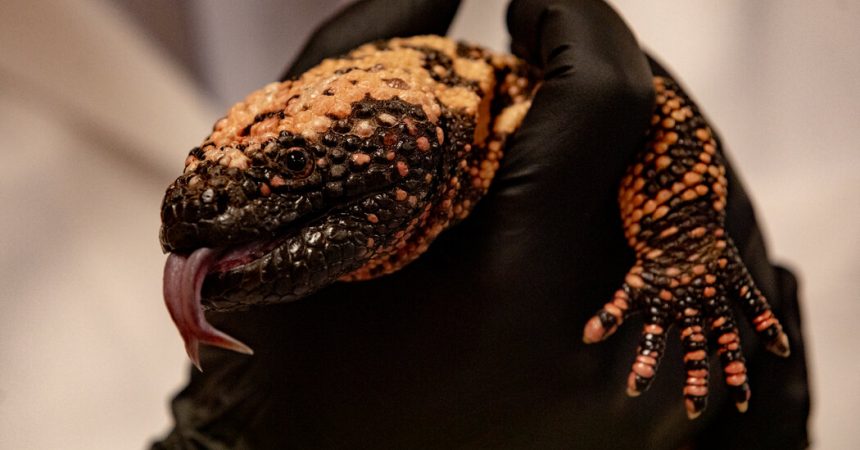By any measure, the diabetes drug Ozempic has been a blockbuster, racking up billions of dollars in annual sales. In the United States alone, pharmacies fill millions of prescriptions for Ozempic and related drugs, which have become popular for their weight-loss effects, every month.
But in the beginning, before the celebrity endorsements and the think pieces and the global supply crunch, there was just a strange, venomous lizard with a flair for intermittent fasting. The Gila monster, which is native to the deserts of North America, can survive on just a few meals a year, thanks to a digestion-slowing hormone in its venom.
The discovery of this hormone paved the way for Ozempic, making the Gila monster an enormously profitable gift to modern medicine. And last summer one particular Gila monster, a former pet named Pebbles, needed medicine in return.
Pebbles, a resident at the Creature Conservancy, a wildlife education organization in Ann Arbor, Mich., had been infected with a parasite called Cryptosporidium. Hard to kill, the parasite colonizes the digestive tract and is typically a death sentence for reptiles.
A veterinarian had recommended that Pebbles be humanely euthanized. But the Creature Conservancy wasn’t ready to accept that fate for Pebbles, who had at least another decade of life potentially ahead of her.
“If we can fix her,” said Steve Marsh, the founder of the Creature Conservancy, one afternoon last July.
He corrected himself: “If he can fix her,” he said. He nodded toward a sharply dressed man who was cradling Pebbles in his gloved hands: Tim Cernak, a pharmaceutical chemist at the University of Michigan.
A few minutes later, a veterinarian inserted a tube into the lizard’s throat, collecting liquid from her stomach. Later, Dr. Cernak would study this sample in his lab, hoping to isolate the parasite and find a drug that could vanquish it.







